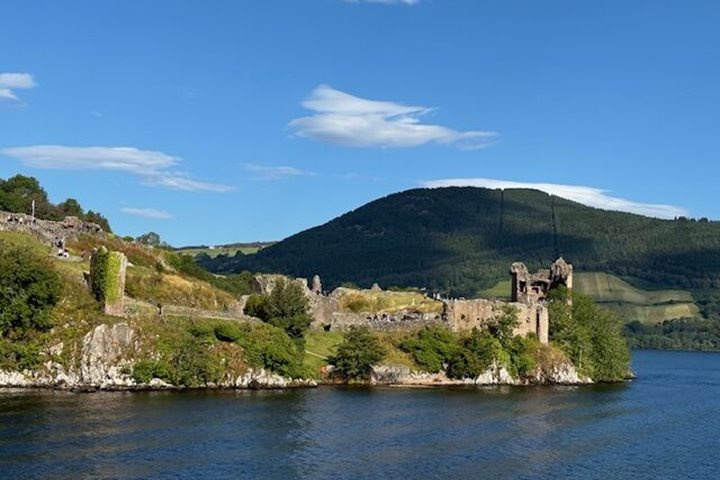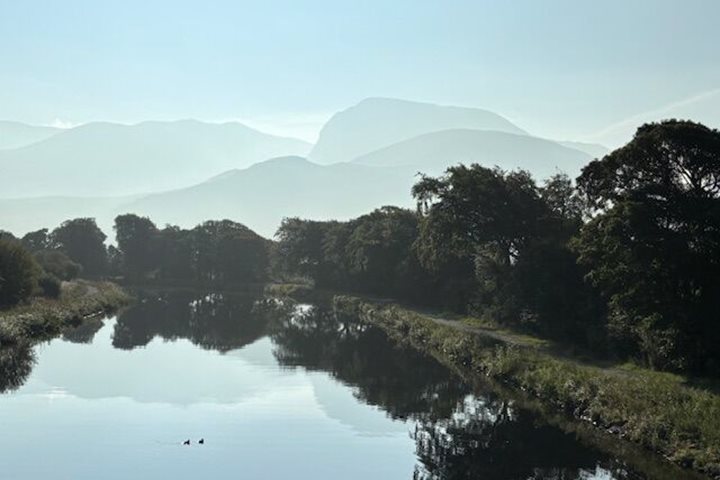Our first morning on board Lord of the Glens found us in the tranquil waters of the Caledonian Canal, looking down to the River Ness and the historic city of Inverness spread out below. Soon we were on our way to the famous battlefield of Culloden, where the hopes and dreams of the Jacobite rebels ended at the hands of the British army on April 16, 1746. At the state-of-the-art museum, costumed reenactors vividly portrayed the lives of the soldiers and their camp followers, as well as some alarming medical procedures of the day. Those fateful events were instrumental in the destruction of the clan system, leading eventually to the Highland Clearances and the diaspora of the Highland people.
Not far away, the River Nairn flows peacefully through a lovely tree-lined glen. Four thousand years ago, the local farming community came together to raise some intriguing stone monuments, focused on the midwinter solstice, consisting of two identically chambered cairns and a ring cairn, each complex structure decorated with cup marks and surrounded by rings of standing stones. It is impossible to stand before the Clava Cairns without feeling wonder at the meaning of this sacred grove and the skill of their long-lost builders.
Back on the ship, we began our journey along the canal and out across the mysterious depths of Loch Ness. There were the medieval ruins of Urquhart Castle, an important royal stronghold, occupying a strategic site which was fortified long before the days of St. Columba. The passage through Loch Ness is usually quite uneventful, but not today! The sound of a helicopter close to the ship grabbed our attention, and we watched in fascination as the Air-Sea Rescue Coast Guard practiced their maneuvers by lowering a man and then a stretcher onto our back deck in a magnificent display of aerial control.
At the end of Loch Ness lies the picturesque village of Fort Augustus where we reentered the canal and ascended a cluster of five locks, before setting off to explore the area or join a hike through an ancient cemetery. A day immersed in Scottish history and culture concluded with some beautiful traditional music with small pipes and an accordion.









